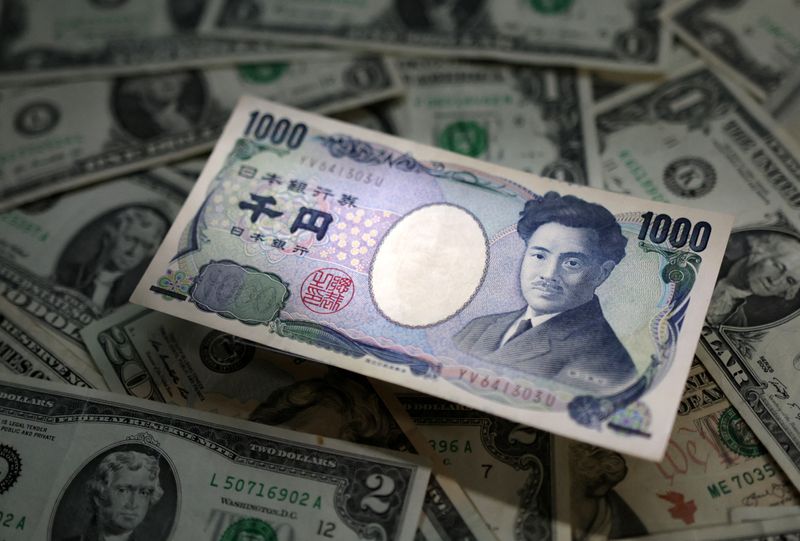Forex
Yen hits 4-week low, dollar steady ahead of key inflation data

By Hannah Lang and Alun John
NEW YORK/LONDON (Reuters) -The dollar held firm on Wednesday, boosted by higher U.S. yields ahead of key inflation data later in the week, and gaining on the Japanese yen as placid markets encouraged investors to resume carry trades.
The dollar reached as high as 157.41 yen early on Wednesday, inching back to levels that led to bouts of likely intervention from Tokyo at the end of April and early May, albeit rising at a much slower pace than it did last month.
It was last at 157.275 yen, up 0.06% on the day.
“Generally, across Asian currencies, that relief rally post-CPI is starting to fade, as U.S. easing expectations are trimmed and some rocky bond auctions cause yields to climb back up, placing the yen and under pressure,” said Simon Harvey, head of FX analysis at Monex Europe.
Slightly softer U.S. consumer price inflation data this month weakened the dollar across the board. Since then, however, U.S Treasury yields have resumed their climb, with benchmark 10-year yields their highest in almost four weeks at 4.57%.
A lacklustre auction of two-year and five-year notes on Tuesday that raised doubts about demand for U.S. government debt, and data showing that U.S. consumer confidence unexpectedly improved in May, were the drivers of the move higher in yields.
The was last at 104.83, up 0.16%. The U.S. core personal consumption expenditures (PCE) price index report – the Federal Reserve’s preferred measure of inflation – will be released on Friday. Expectations are for it to hold steady on a monthly basis.
Leaving aside the Japanese yen, “most of the foreign currencies have rallied…against the U.S. dollar since the middle of April,” said Marc Chandler, chief market strategist at Bannockburn Global Forex. “I’m thinking that that move is over and we should look for a dollar rebound.”
The China-exposed dollar was down 0.32% at $0.6628, even after Australian consumer price inflation unexpectedly rose to a five-month high in April, adding to risks that the next move in local interest rates might be up. [AUD/]
Also in the mix for the yen was the carry trade, where investors borrow in a low-yielding currency to invest in higher yielders.
“The yen remains under considerable downward pressure with carry appetite elevated due to low FX volatility,” Derek Halpenny, head of research global markets EMEA at MUFG, said in a note, pointing to elevated levels in euro/yen and sterling/yen.
The euro spent European trading reacting to German regional inflation data, dropping to a near two-year low on the pound of 84.84 pence.
It then recovered after nationwide data showed German inflation rose slightly more than expected to 2.8% in May, though a level that is unlikely to do anything to disrupt expectations for a European Central Bank rate cut next month.

The common currency was last flat versus the dollar at $1.0834.
The pound was a touch lower on the dollar at $1.274, having hit a two-month high the day before.

 Forex3 years ago
Forex3 years agoForex Today: the dollar is gaining strength amid gloomy sentiment at the start of the Fed’s week

 Forex3 years ago
Forex3 years agoUnbiased review of Pocket Option broker

 Forex3 years ago
Forex3 years agoDollar to pound sterling exchange rate today: Pound plummeted to its lowest since 1985

 Forex3 years ago
Forex3 years agoHow is the Australian dollar doing today?

 Cryptocurrency3 years ago
Cryptocurrency3 years agoWhat happened in the crypto market – current events today

 World3 years ago
World3 years agoWhy are modern video games an art form?

 Commodities3 years ago
Commodities3 years agoCopper continues to fall in price on expectations of lower demand in China

 Economy3 years ago
Economy3 years agoCrude oil tankers double in price due to EU anti-Russian sanctions





















